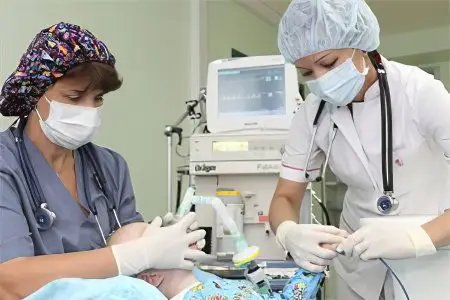Contents
Anaphylactic shock requires immediate assistance to the victim, and it is speed that plays the leading role here.
The drug of choice remains a 0,1% solution of adrenaline hydrochloride. Other drugs can only be used as adjuvant therapy. Moreover, the sooner adrenaline is administered from the moment the patient begins to develop severe hypotension, respiratory and heart failure, the more favorable the prognosis. If this period is extended, then death occurs in 90% of cases.
First aid for anaphylactic shock
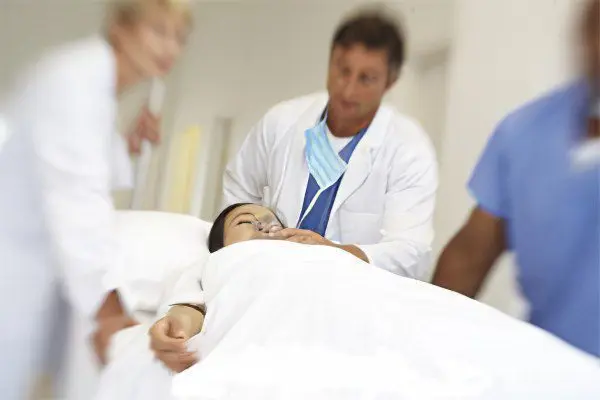
An allergic reaction is a complex process that activates the reaction of immune complexes and a number of specific cells (mast cells and basophils). Which in turn provokes a general inflammatory response – from itching, sneezing and watery eyes to a condition called anaphylactic shock.
Anaphylactic shock is a serious condition, the symptoms develop quickly, without medical assistance it can end in death.
The algorithm of actions consists of three steps:
At firstimmediately call an ambulance. Describe the patient’s condition in as much detail as possible, tell the dispatcher what preceded anaphylaxis, for example, an insect bite, medication, etc.
Secondly, render all possible assistance to the victim. It is important not to be mistaken here, the state of shock may not be caused by anaphylaxis. The main thing is not to panic and concentrate – anaphylactic shock is necessarily preceded by contact with the allergen. So, your task before the ambulance arrives:
If possible, ask the patient and determine what caused the allergic reaction. It can be cat-dogs, wool, fluff or dust, household chemicals, etc. – urgently need to stop contact of the victim with the allergen. If it is a bite or an injection (shot), then lubricate the wound with any antiseptic, you can apply a tourniquet above the wound (only if you know how to do this, remember – do no harm!), The bite site can be cooled.
Give the victim an antihistamine drug – the one that the allergic person takes, or any available in the first-aid kit. If the patient is prone to allergies, and he has adrenaline in the first-aid kit, then make an “injection” of adrenaline – intramuscularly.
Lay the patient in a comfortable horizontal position – not on a pillow, but on a free flat surface, raise the legs slightly above the head. Turn your head sideways.
Thirdly, monitor the patient’s condition – measure the pulse, monitor breathing and wait for the arrival of the ambulance doctors. Upon arrival, the doctor must accurately convey the information that you know: when the reaction began, how much time has passed since the onset, what actions were taken and what medications were given to the victim. In no case do not hide anything, remember – a person’s life depends on it!
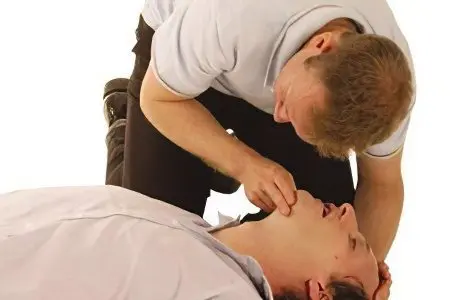
So, your allergic friend ate peanuts, or he was bitten by a bee, or he was treated to a penicillin tablet “from the throat”, what should I do?
Anaphylactic shock is an immediate type of reaction, therefore, it begins to develop immediately after contact with a provocateur. The qualitative composition of the allergen does not affect the reaction, although a large amount aggravates the course. If anaphylaxis has begun, then without emergency care, it most likely will not end. The rate of increase of symptoms is from several minutes to several hours, the count can go by minutes, so you:
You call an ambulance, describe the situation in detail – high-quality information will help the ambulance dispatcher to orient the doctor, and upon arrival he will not need to waste time analyzing the situation. If the dispatcher gave you recommendations, be sure to follow them. Do not panic, do not shout “dying” if the situation is not so critical – by doing this you do not speed up the arrival of doctors, but only escalate the situation. Keep a clear head, describe everything to the ambulance dispatcher as it is.
An anaphylactic reaction begins with a deterioration in well-being – under the influence of histamine, vascular collapse occurs, blood circulation is disturbed. A person feels how his consciousness becomes cloudy, shortness of breath increases, his skin becomes wet and cold, he experiences acute anxiety, he can wet himself, there is an acute urge to defecate, a “fainting” state occurs. Urgently give an antihistamine, lay the patient down and observe. If you are not experienced in first aid, remember – inept “help” will do more harm than help. Wait for the ambulance to arrive.
Qualified first aid for anaphylactic shock
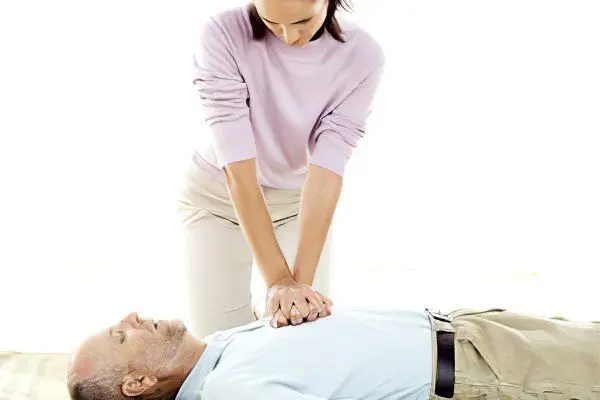
The doctor is obliged to record in writing all the activities that he performs to stop anaphylactic shock. Basic points of patient management:
It is imperative to eliminate the allergen that provoked the development of a pathological reaction. For example, remove the sting of an insect, stop the administration of the drug, etc. If the allergen was injected into the limb, then it is necessary to apply a venous tourniquet, which should be located above the injection or bite site, and also apply ice to this area. This will reduce the rate of entry of the drug or poison into the systemic circulation.
Then it is necessary to assess the patient’s condition. It is important how a person breathes, what color his skin is, and whether he is conscious or not. The weight of the victim and his circulation are estimated. All this should happen as quickly as possible in order to be able to proceed with lightning speed to the implementation of the following points.
If the place and time of the incident allows, then the resuscitation team should be called immediately. If anaphylactic shock develops outside the hospital, then you need to call an ambulance.
Intramuscularly, the patient is injected with a solution of Epinephrine (0,1%) – 0,3-0,5 ml. The injection site is the anterior thigh. The calculation of the dose depends on the age and weight of the patient. So, adults are recommended to count adrenaline hydrochloride 0,01 ml per kg of body weight, and children 1 ml per kg of body weight. The maximum single dose for an adult is 0,5 ml, and for children 0,3 ml. If necessary, the drug is administered again, after 5-15 minutes. As a rule, the response occurs on the first or second injection.
The victim should be laid on his back with the lower limbs raised up. The head should be turned to the side, and the lower jaw should be extended. This will prevent the tongue from sinking and will not allow the patient to choke on vomit. When a person has dentures, they must be removed. The patient is not seated or put on his feet, this is very dangerous and can provoke his death in a few seconds. If the root of the tongue interferes with normal breathing against the background of impaired consciousness, then a triple Safar technique is performed (the patient lies on his back, his head is re-extended in the cervical-occipital region, and the lower jaw is pushed forward and up). If possible, an airway or endotracheal tube is inserted into the patient. Victims who develop laryngeal edema need urgent tracheal intubation. If this is not possible, then a conicotomy is performed. This is an emergency dissection of the membrane, which is located in the gap between the cricoid and thyroid cartilage. When the airways are free, the person must be provided with pure oxygen.
A person should breathe clean air, and if necessary, he is given oxygen inhalations. It is given through the nose with a catheter, through the mouth with a mask, or through an air tube when spontaneous breathing is maintained but consciousness remains confused. Connecting the patient to a ventilator is necessary in case of impaired consciousness, against the background of edema of the trachea and larynx, and also when there is no way to eliminate the growing hypotension. Other indications for mechanical ventilation are: bronchospasm with the transition to respiratory failure, pulmonary edema, which is not relieved by medication, coagulopathy bleeding.
A 0,9% sodium chloride solution is injected intravenously in a volume of 1-2 liters, with a dosage of 5-10 ml / kg for an adult, and 10 ml / kg for a child.
The doctor must be in a state of constant readiness for the need for resuscitation aimed at restoring the functioning of the heart and respiratory system. Adult patients perform indirect heart massage with a frequency of 100-120 shocks per minute to a depth of 6 cm. Children perform 100 compressions per minute to a depth of 5 cm, and infants up to 4 cm. .
It is important to monitor the patient’s pulse, respiratory rate, blood pressure level, blood oxygenation level. If it is impossible to do this using monitors, then the pulse is calculated manually every 2-5 minutes.
Treatment of the patient in the intensive care unit
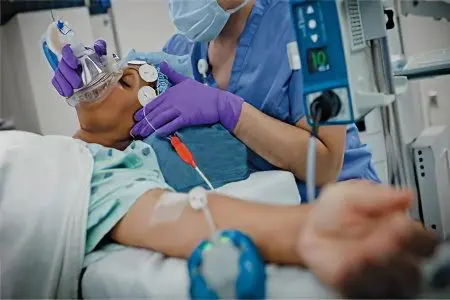
It is important to get the person to the intensive care unit as soon as possible. In the future, the tactics of treatment is carried out according to the following scheme:
If intramuscular administration of Epinephrine does not give an effect, then it is administered intravenously, in portions, for 5-10 minutes. Or intravenous drip administration of the drug is possible.
With portioned administration, it will be necessary to dilute 1 ml of adrenaline (0,1%) in 10 ml of sodium chloride (0,9%).
With a drip of 1 ml of Epinephrine (0,1%), diluted in 100 ml of sodium chloride. The initial drug delivery rate is 30-100 ml/hour, i.e. 5-15 µg per minute. The dose should be adjusted depending on the patient’s condition and on the severity of the development of side effects on intravenous adrenaline.
If a person’s condition is severe, then intravenous drip administration of pressor amines is indicated.
Norepinephrine is administered intravenously, by drip method. It will take 1-2 ml of Norepinephrine at a concentration of 0,2%. It is diluted in glucose solution (500 ml, 5%) or in sodium chloride solution (500 ml, 0,9%). The feed rate is 4-8 mcg per minute. The drug is administered until the blood pressure returns to normal.
It is also possible intravenous administration of Dopamine. It is dissolved in a volume of 400 mg in a glucose solution (500 ml, 5%) or in a sodium chloride solution (500 ml, 0,9%). The initial rate of administration is 2-10 µg/kg/min. The dose should be adjusted so that the upper pressure does not exceed 90 mm. rt. Art. If the patient’s condition remains severe, then the dosage is increased to 50 mcg / kg / min. Maximum per day you can enter no more than 1500 mg. When the patient’s condition gradually returns to normal, the dosage of the drug should be gradually reduced.
If the patient shows resistance to adrenaline drugs, then foreign authors suggest using Glucagon instead. Most often, resistance is observed in those patients who previously received beta-blockers (the word “earlier” means the situation before the development of anaphylactic shock). The dosage of Glucagon is from 1 to 5 ml. The maximum dose administered to children should not be more than 1 ml, the drug is calculated from 20-30 mcg per kilogram of body weight. Glucagon is administered intravenously over 5 minutes, after which the dose is gradually adjusted. It is necessary to ensure that the patient lies on his side at all times, since Glucagon can provoke a gag reflex.
When the patient does not respond to either Glucagon or adrenaline preparations, Isoproterenol may be used. It is administered intravenously in a volume of 1 mg (0,1 µg/kg/min). However, the use of this drug is associated with the risk of developing arrhythmias and myocardial ischemia.
In order to prevent a decrease in the volume of circulating blood, it is necessary to administer drugs such as:
Dextran with a molecular weight of 35-45 thousand Daltons.
Sodium chloride 0,9% concentration.
Other isotonic solutions.
Second-line drugs after adrenaline are:

Glucocorticosteroids, the initial dose of which is: 90-120 mg bolus, intravenously for Prednisolone, 8-32 mg drip, intravenous for Dexamethasone, 50-120 mg bolus, intravenous for Methylprednisolone, 8-32 mg intravenously, drip for Betamethasone. It is also possible to use other systemic glucocorticosteroids. For therapy in childhood, the dosage is somewhat different, for example, 2-5 mg / kg for Prednisolone, 20-125 mcg / kg for Betamethasone. According to the technique of pulse therapy, glucocorticosteroids are not administered. The duration of treatment and dose adjustment depends on the patient’s condition.
If there are indications, then the introduction of H1-histamine receptor blockers is possible. However, they are allowed to be used against the background of complete stabilization of hemodynamics. These can be drugs such as: Clemastin, diphenhydramine, Chloropyramine, etc. Tavegil or Clemastin is administered intravenously or intramuscularly at a dose of 2 mg (0,1% -2 ml) to an adult patient. Children are shown intramuscular injection at a dose of 25 mcg / kg / day, and this dose must be divided into 2 times. It is also possible to use Dimedrol (20-50 mg for adults, 1 mg / kg for children weighing less than 30 kg), or Suprastin. The dosage for Suprastin is 20 mg (0,2% -1 ml) for adults and 5 mg (0,25 ml) for children.
If the patient does not stop bronchospasm even after the administration of adrenaline, then he is shown inhalation of beta2-antagonists. To do this, the patient must breathe through a nebulizer with a solution of Salbutamol 2,5 mg / 2,5 ml. In parallel, the patient is administered intravenously Aminophylline 5-6 mcg/kg.
If laryngeal edema develops, then a tracheostomy is performed on the patient.
The more severe the anaphylactic shock, the longer the patient will be under close medical supervision. Even if the condition was quickly stabilized, the patient must stay in a medical institution for at least 2 days. The fact is that the risk of relapse of anaphylaxis remains high.
Moreover, it retains the possibility of developing complications delayed in time, for example, hepatitis, neuritis, myocarditis of an allergic nature, etc. Also, for another 21-28 days, disruption of the functioning of various systems and organs is possible.
What can not be done?
You can not start treatment with the introduction of an antihistamine!
It is forbidden to use the drug that provoked anaphylaxis. Also, those medicines that contain components that can give a cross reaction are not used.
The product that led to the development of anaphylactic shock is excluded from the diet.
If a patient has a confirmed allergy to pollen, then he is not prescribed drugs based on it.
First aid kit for anaphylactic shock
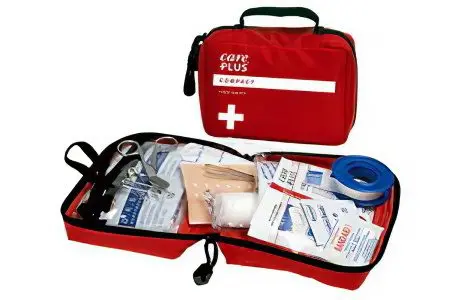
Adrenaline (Epinephrine) in a solution of 0,1%, 1 mg / ml. The drug is contained in ampoules No. 10.
Norepinephrine in a solution of 0,2%. The drug in ampoules No. 10.
Metazone in solution 1%. The drug in ampoules No. 5.
Dopamine in solution 5 ml (200 mcg). The drug in ampoules No. 5.
Suprastin in a solution of 2%. The drug in ampoules No. 10.
Tavegil in a solution of 0,1%. The drug in ampoules No. 10.
Prednisolone in solution 30 mg. The drug in ampoules No. 10.
Dexamethasone in solution 4 mg. The drug in ampoules No. 10.
Hydrocortisone hemisuccinate or solucortef 100 mg – No. 10. The drug for in / in.
Eufillin in a solution of 2,4%. The drug in ampoules No. 10.
Salbutamol in the form of an aerosol for inhalation. Dosage 100 mcg/kg No. 2.
Strofantin-K in a solution of 0,05%. The drug in ampoules No. 5.
Cordiamin in a solution of 25%. The drug in ampoules No. 5.
Diazepam in solution 0,5%. The drug in ampoules No. 5. Alternative – Seduxen or Relanium.
Glucose in solution 5%, 250 ml No. 2.
Atropine in a solution of 0,1%. The drug in ampoules No. 5.
Sodium chloride in a solution of 0,9%. The drug in ampoules №20.
Sodium chloride in a solution of 0,9%, 400 ml, No. 2.
Ethyl alcohol 70% concentration – 100 ml.
Language Holder No. 1.
Mouth expander #1.
Pillow oxygen No. 2.
Tourniquet and scalpel No. 1.
Disposable syringes 1 ml, 2 ml, 5 ml and 10 ml and 5 needles for them.
Intravenous catheter, needle No. 5 to it.
Ice pack #1.
System for drip infusions No. 2.
Two pairs of medical disposable gloves.
Air duct.
Ambu manual breathing apparatus.










